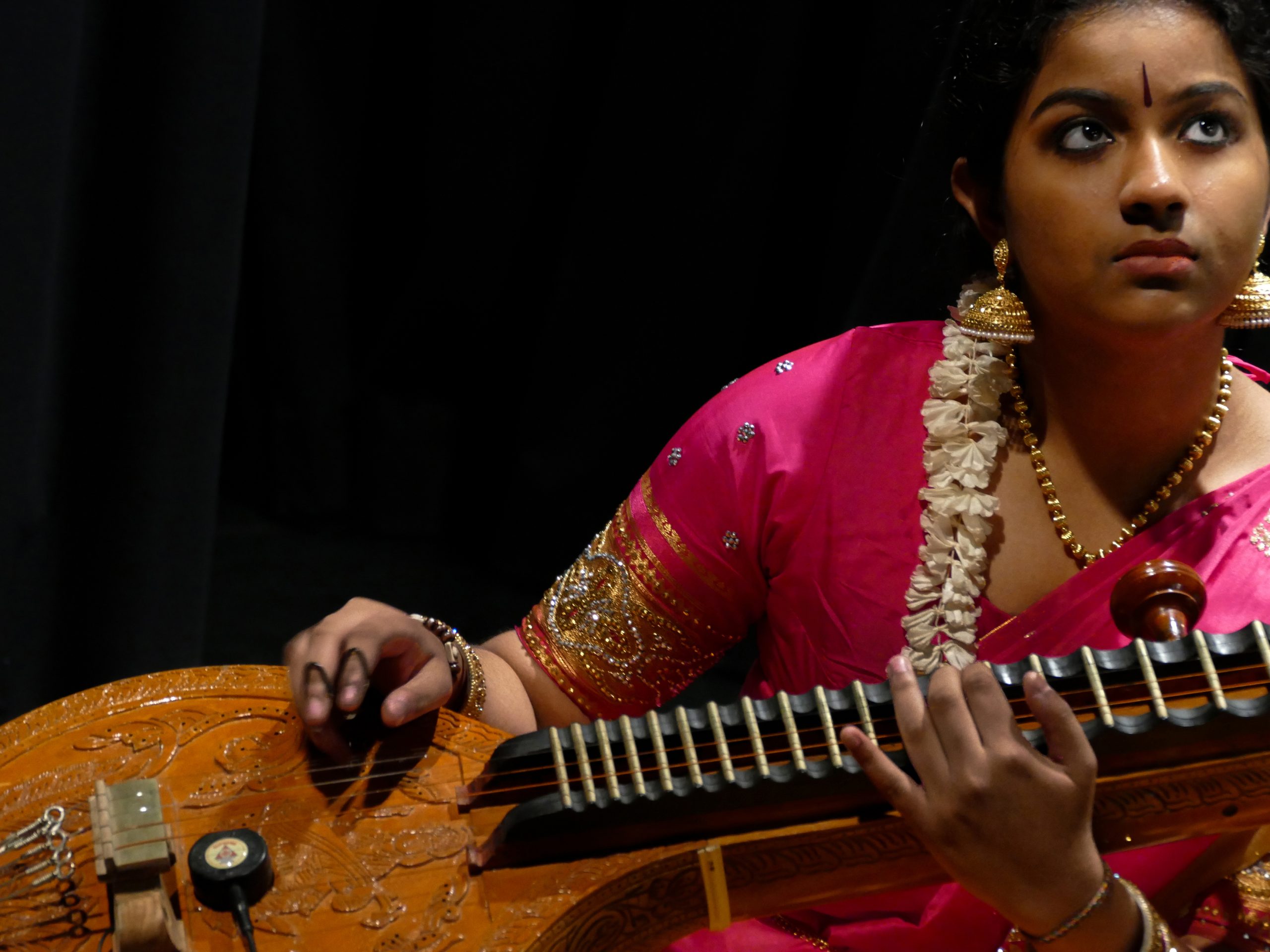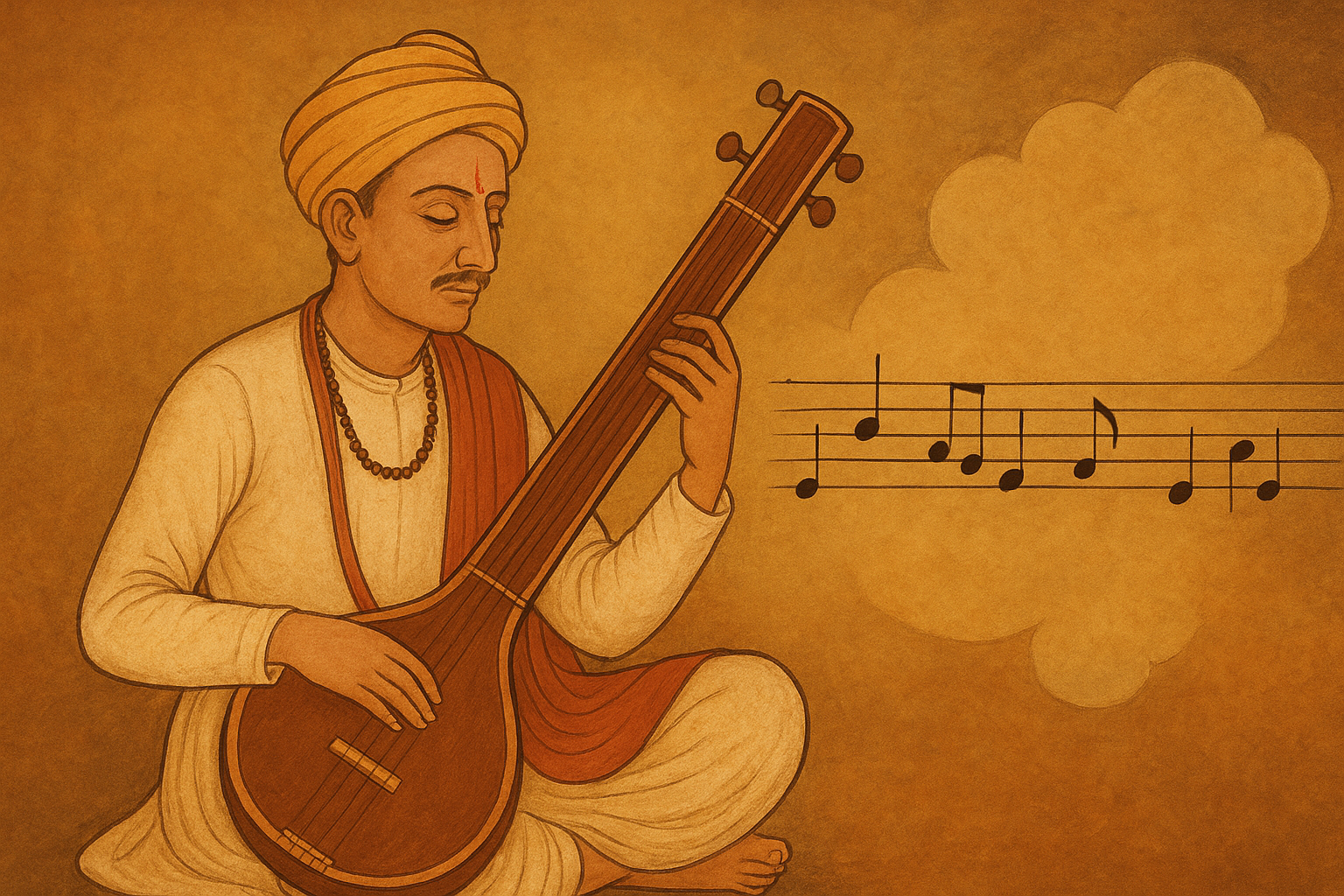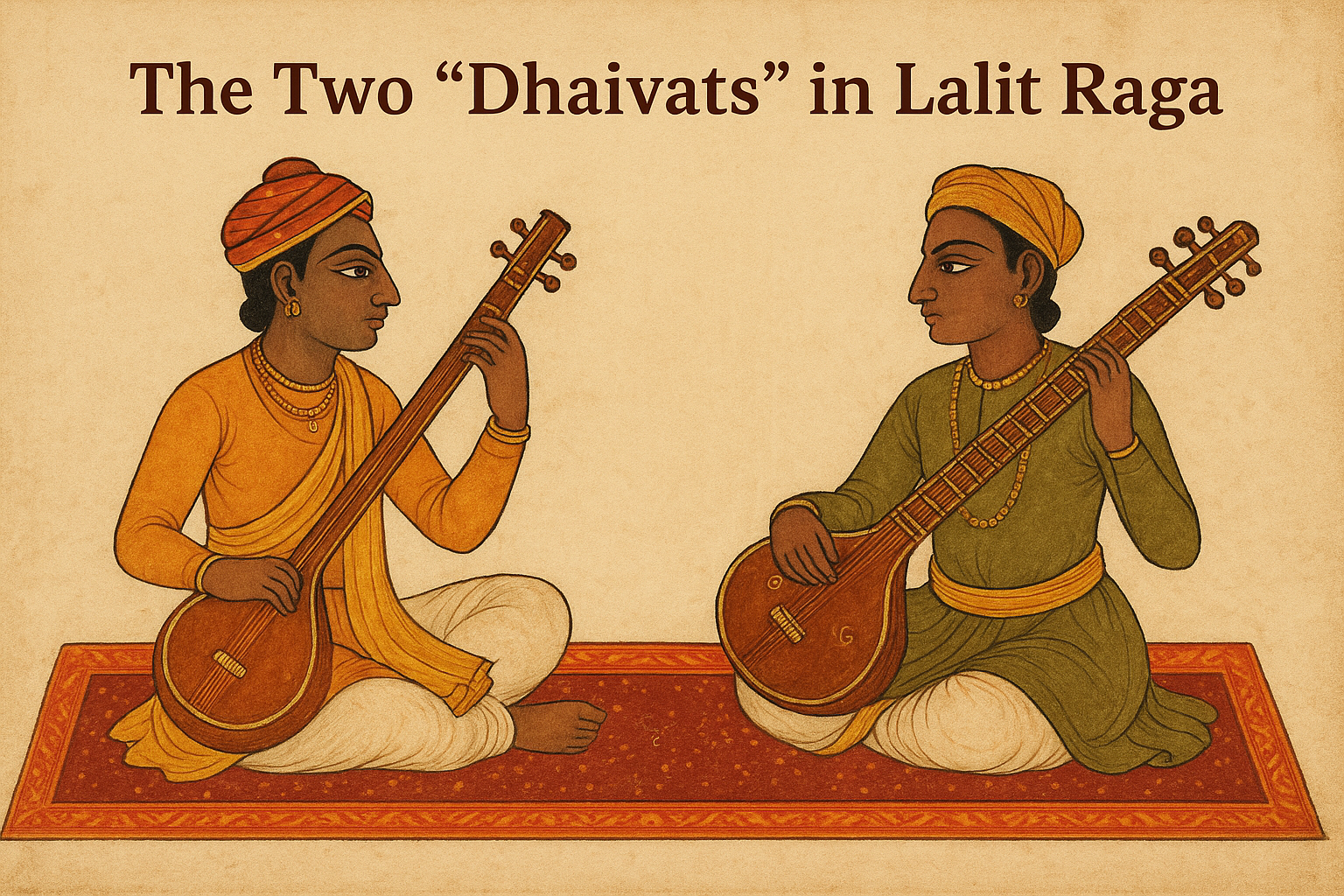In the previous parts of our series, we explored the song forms and rhythmic structures of Carnatic music. Now, in Part 3, we delve into the historical roots of South Indian tala tradition, its structural principles, and how it compares with the Hindustani (North Indian) system.
🎵 Ancient Roots of the South Indian Tala System
Before the 7 major talas of Carnatic music became standardized, ancient talas like Chachaputa, Panchapani, Shatpitaputra, and Udbhata were in use. Scholars believe that both Hindustani and Carnatic tala traditions evolved from these early frameworks.
A unique feature of Carnatic tala is its dependence on the length of the laghu, which makes the tala system inherently mathematical and flexible.
🧮 The Concept of Prastara – Endless Permutations
Carnatic talas are constructed by interchanging units such as anudhrutam (1 beat), dhrutam (2 beats), laghu (variable beats), guru (8 beats), and pluta (12 beats). This method of recombination is called Prastara—a creative system that opens the door to infinite rhythmic possibilities.
However, in practice, only those talas that feel natural and are musically expressive have survived in usage.
🔢 Laghu and Its Role in Tala Jati
The value of laghu is central in determining a tala’s jati (type):
Laghu Value (Beats) | Jati Type |
3 | Tisra |
4 | Chatusra |
5 | Khanda |
7 | Misra |
9 | Sankirna |
This system allows the same tala to be rendered in different lengths depending on its jati.
🪘 The 7 Core Talas in Carnatic Tradition
Below is the list of the 7 talas most commonly used, along with their structure and beat breakdown:
Tala Name | Structure | Notation | Total Beats (Chatusra Jati) |
Dhruva | Laghu, Dhrutam, Laghu, Laghu | ` | o |
Matya | Laghu, Dhrutam, Laghu | ` | o |
Rupaka | Dhrutam, Laghu | `o | ` |
Jhampa | Laghu, Anudhrutam, Dhrutam | ` | ↑ o` |
Triputa | Laghu, Dhrutam, Dhrutam | ` | o o` |
Ata | Laghu, Laghu, Dhrutam, Dhrutam | ` | |
Eka | Laghu | ` | ` |
Only one or two jatis are commonly used in practice for each tala. For example:
- Dhruva Tala in Chatusra Jati: 4 + 2 + 4 + 4 = 14 beats
- Matya Tala in Tisra Jati: 3 + 2 + 3 = 8 beats
The 8-beat version of Triputa Tala is famously known as Adi Tala. Similarly, Rupaka Tala in 5 beats (with Misra or Khanda jati) is called Chapu Tala.
🤝 Similarities Between Carnatic and Hindustani Music
Despite their regional distinctions, both traditions share foundational principles:
- Equal emphasis on melody (raga) and rhythm (tala)
- 12 swaras leading to thaats/melakartas and eventually ragas
- Alap and improvisation as standard practice
- Use of parent-child (janaka-janya) raga concept
- Three branches: vocal, instrumental, and dance
- Strict attention to tala theory and raga purity
⚖️ Key Differences Between Carnatic and Hindustani Traditions
Aspect | Carnatic Music | Hindustani Music |
Swaras (Note names) | Shuddha swaras only; double naming for flexibility | Uses komal and tivra swaras distinctly |
Parent Scales (Thaats/Melakartas) | 72 Melakartas | 10 Thaats |
Languages used | Telugu, Tamil, Kannada, Malayalam | Hindi, Braj, Urdu |
Tala Structure | Strict, mathematical | More fluid, often bol-based |
Voice Production Style | Firm, structured | Flexible, with vocal inflections |
Raga Names | Often different for similar ragas (e.g., Bhupali → Mohanam) | Same name may imply different notes (e.g., Hindol) |
Percussion Instruments | Mridangam | Tabla |
Compositions | Fixed format (e.g., kriti, varnam) | Flexible with scope for variation |
Tala Variability | 7 base talas × 5 jatis = 35 | Dozens of talas with varying sections and bols |
Kaala (Beat silence) | Rare; no khaali like in Hindustani | Prominent concept with offbeat rests |
Prabandha Style Names | Different, though structurally similar | Different naming conventions |
Double Notes | Not used in immediate succession | Common (e.g., Malhar, Jog, Lalit) |
Thaat Equivalence | Many ragas map to Hindustani thaats | Less emphasis on melakarta equivalence |
🎶 Why It Matters
Understanding the differences and commonalities between Carnatic and Hindustani music is key to appreciating the full scope of Indian classical music. While both systems evolved independently, they complement each other in philosophy and depth.
At Sur Sanskaar Academy of Music, we celebrate the unique identity of the Carnatic tradition while also fostering awareness of the broader Indian musical landscape.
💡 Curious about how Adi Tala differs from Teen Taal in structure and use? Or how Mohanam and Bhupali compare in their emotional essence?
Stay tuned for our upcoming interactive sessions and comparative musicology workshops!
🎓 Enroll now to experience the rich world of Carnatic rhythm and melody.


